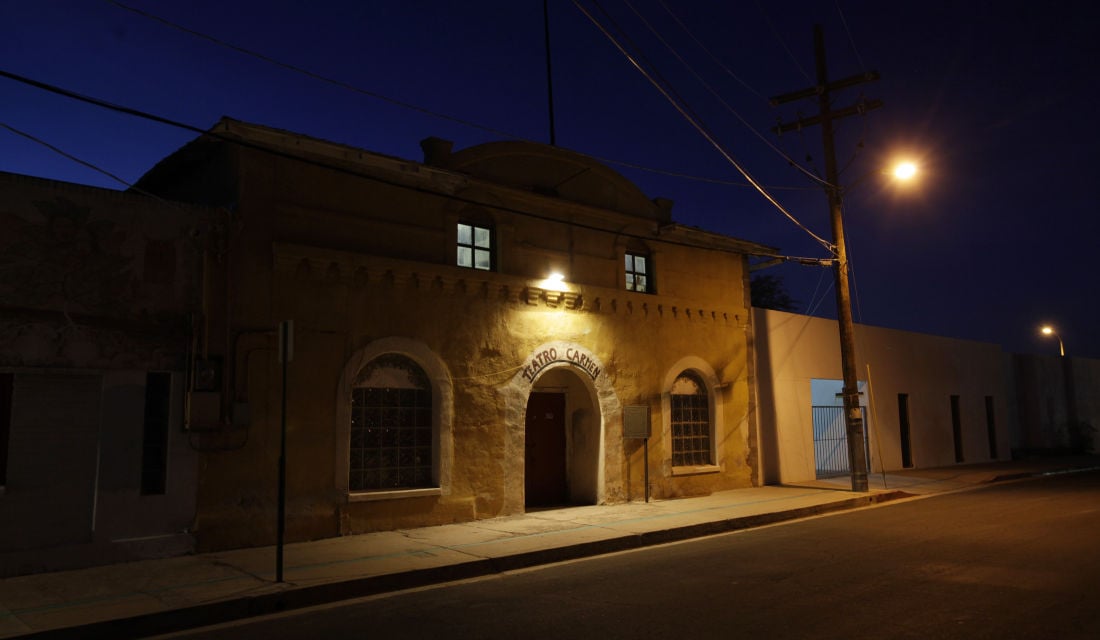As a child growing up in 1800s Tucson, Carmen Soto must have seen many changes to the small community. The year she was born, 1863, President Lincoln signed into law the establishment of the Territory of Arizona, and in 1867, the capital of the new territory was moved to Tucson.
The Soto family was an integral part of the Old Pueblo. Carmen’s mother, Carmela Comadurán de Soto, was a descendant of Antonio Comadurán, once captain of the Royal Presidio of the Fort of San Agustín de Tucson. Her father, Jose Maria Soto, was also from a well-established and prominent Tucson dynasty.
Well educated, Carmen became an important part of the cultural and social revitalization of Tucson at the beginning of the 20th century.
At age 26 she married Ramon Vásquez who owned several successful businesses in Tucson and Nogales, Arizona. With no children of their own, the couple adopted at least 3 children — Juan Romero, Alicia and Armando. One source indicates a fourth child, Herminia, was also adopted. Carmen was an avid supporter of an orphanage in Nogales.
In 1914, Ramon presented his wife with a plot of land on Meyer Street in downtown Tucson. Carmen knew exactly what she wanted to do with the property. She commissioned self-taught carpenter Manuel Flores to design a theater on the land.
Flores had no formal training as an architect but his carpentry skills had become well known in the community and he was considered a talented and enterprising craftsman. He went on to design and build Santa Cruz Church on South Sixth Avenue as well as Marist College on Ochoa Street.
What Carmen wanted was a place where Mexican and Spanish theatrical troupes could come and perform for the people of Tucson. The building, Teatro Carmen, named for its founder, was crafted in the Sonoran-mission style that was popular at the time.
The adobe structure included an impressively large stage with brilliant lighting, imaginative ornamentations and embellishments that included an embossed ceiling. It could seat up to 1,400 theatergoers.
On May 20, 1915, the theater opened with a performance of the comedy “Cerebro y Corazón” (Heart and Brain), written by Mexican author and poet Teresa Farias Tassi de Isaias. The Tucson Spanish language newspaper, El Tucsonense, praised the new theater, calling it “a great artistic and financial success.”
Carmen sought out some of Mexico’s most famous actors and actresses, such as Virginia Fábregas, who went on to become a film star, and Elena Madrigal and Arturo Carillo to grace the stage of her theater.
She brought in plays from Spain, operas, dramas — both historic and contemporary — comedies, zarzuelas — a Spanish form of musical comedy — and sainetes, short burlesque farces. All of this entertainment was presented in Spanish, giving the artists an opportunity to gain fame beyond their own country.
People dressed in their finest to go to Teatro Carmen. “It was a beautiful and elegant affair,” said one theatergoer.
“That’s where all the Mexican society used to go,” said another aficionado. “They would go out to the functions in the evening all dressed up and elegant. ... Performers came from Mexico — famous people like the Hermanos Soler, Virginia Fábregas and Esperanza Iris.”
Carmen sought out national theatrical companies such as La Nacional from Mexico City and the opera company Millanès Caballè, providing Tucson’s Hispanic population with a positive perception of their culture and bringing the dusty town to the forefront of cultural and social activity in the Southwest.
The theater also served as a community meeting hall for social, political and educational events.
By the early 1920s, however, movies and boxing matches attracted more of an audience than did refined Spanish plays. Teatro Carmen closed for the last seven months of 1920 to reinvent itself as a movie theater, dance hall and boxing arena, although it still attracted an occasional theatrical company. By 1922, however, Carmen could no longer entice Mexican repertory companies to make the long journey to Tucson to perform. She sold the theater in 1926 and before long, the once gracious auditorium was filled with broken cars in need of repair. It had become a garage.
By that time Carmen had moved to Nogales, Arizona, to be closer to her family. She died there on Oct. 8, 1934, at the age of 71.
Teatro Carmen still stands at 348 S. Meyer St. and is now privately owned. At one time it served as the Black Elks Lodge and during the years its exterior has been featured in movies such as “The Gay Desperado” in 1936 and “Boys on the Side” in 1995.
Its copper-looking facade still shines brightly in the Arizona sun and stands as a remembrance of bygone days.
Carmen Vásquez was inducted into the Arizona Women’s Hall of Fame in 1984. She and her theater are featured on the Arizona Women’s Heritage Trial. She was a major player in bringing Tucson theater into the 20th century, paving the way for actors and actresses of Spanish and Hispanic ancestry to perform their talents to bigger and broader audiences. She provided Tucson with art and culture not yet a part of the untamed Southwest.





